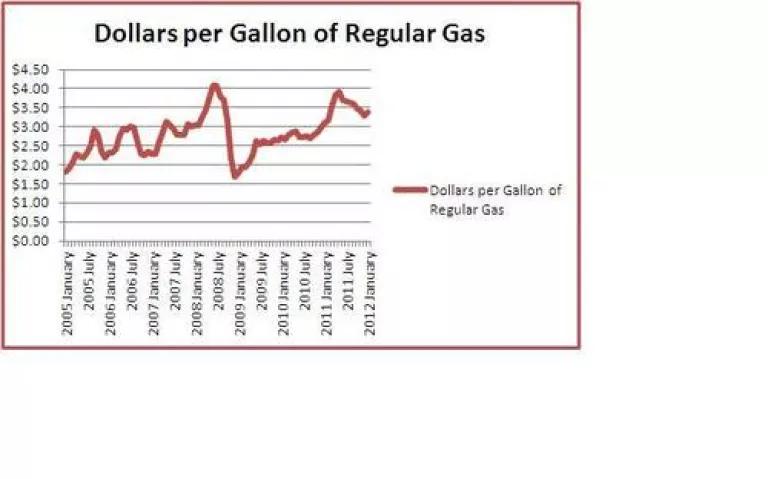
Photo credit: istockphoto/Talaj
Still, let's get the price issue out of the way first. With prices ticking up towards the $4 mark, theories abound about what’s driving them upward so early in the year. Jim Motavalli points to five likely causes. A Motley Fool reporter writes about the end of cheap oil, and the editors of realclearenergy.org posted an interesting chart showing the high cost of scouring the earth (and sea) for more of the black stuff. While the Fool points out investment opportunities due to increasingly expensive oil, Professor Michael Klare as usual pens an insightful piece about the many downsides (besides inevitably higher costs to consumers) including continued energy insecurity and massive environmental damage should we simply barrel forward with plans to gouge the planet for more fossil fuels.
Rising demand, increasingly expensive-and-damaging-to-extract energy, those are deadly fundamentals.
What about speculation? As I’ve written about before, given the crazy nature of the futures market I’m sure it plays a role in the “oil price rocket” now too. But Brad Plumer of the Washington Post strikes an appropriately sober note about this, clarifying that it can’t all be laid at the doorstep of those placing bets on oil price trendlines.
So much ink spilled to figure this out. As I said, I think this is wrongheaded. It reminds of something I read about in Daniel Kahneman’s book about cognition, the “MPG illusion.” Zeroing in on this as a measure of fuel-efficiency leads to errors in judgment when we assume that rises of equal magnitude yields the same fuel savings. And yet, as explained by a NYT blogger, you save a lot more fuel moving from 18 to 28 mpg as opposed to 34 to 54; that’s the way the savings curve works. Better to gauge how many gallons you consume per mile traveled as a comparison, and thanks to the Obama Administration car stickers will include this measure as well starting next year.
The bad news is that when it comes to gasoline we buy at the pump, we also focus on the wrong number. We obsess over what we can’t control – the price – and ignore what we can – number of gallons we buy. Just to underscore how volatile the price of this commodity has become, take a glance at the graph below showing gas price swings in the past seven years (using Energy Information Administration data). The span between the highest peak and lowest trough is huge – $2.40 – and separated by merely 5 months! Guessing – let alone controlling – the price at the pump is a loser’s game.

So, if we ignore the numerator in the price-per-gallon fraction, what’s left? Gallons, of course. How many gallons of gasoline do I have to buy to make my daily rounds? Overall, in 2010 the U.S. consumed an eye-popping 377.58 million gallons of gasoline daily. This very large number, however, masks real variations across the country. As described in 2011’s annual ranking of states based on gasoline payments as a percentage of driver income, we see that if you live in Minnesota or Texas you paid more than $2,000 in a year for gasoline. If, however, you live in New York or Colorado you paid about $1,500 per year.
Why the difference? State and local gas taxes can matter, of course, but those are normally a small percentage of what we pay at the pump, especially nowadays with crude oil making up such a large proportion of the price per gallon. What also matters, of course, is the fuel-efficiency of the fleet in a state and the number of miles consumers travel there.
And as Willie Sutton once noted about banks, that’s where we should focus because that’s where the money is. Time to zero in on cutting gallons wasted instead of wringing our hands about out-of-control prices.
Specifically, we need to take advantage of fuel-efficient vehicle offerings in the marketplace thanks to the Obama Administration’s historic performance standards for autos which my colleague Luke Tonachel has lauded. It’s also important to identify ways to meet daily needs with less wasteful driving, such as handling and maintaining our cars so to cut gallons used per mile driven, telecommuting and in the long-run by “drilling on Main Street”, which means saving oil by hardwiring cities and suburbs with commuter rail, bus rapid transit and walkable neighborhoods.
So media, politicians – enough with the hot air. Time to get to work on real solutions that cut gas costs. I'll be writing a lot more about saving gallons, so stay tuned.